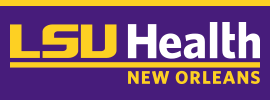Assessment of attitudes of health professionals toward naloxone use
Document Type
Article
Publication Date
10-15-2024
Publication Title
Journal of Opioid Management
Abstract
Purpose:To assess the attitudes and behaviors of physicians, hospital pharmacists, registered nurses, and other healthcare professionals toward naloxone use. This survey will help the University Medical Center New Orleans Analgesic Management Stewardship team understand barriers and determine the education needed to improve the care we provide. Methods:A survey was conducted at a single center, and it contained 17 questions: two concerning provider type and practice setting, followed by 15 qualitative questions to be answered in a Likert scale format, with options ranging from strongly disagree to strongly agree. The survey was disseminated via email, in person, and at meetings. A quick-response code was used. Results:The total number of participants in the survey was 151. Physicians accounted for the majority (n = 76, 50.3 percent), followed by registered nurses (n = 36, 23.8 percent) and then pharmacists (n = 17, 11.3 percent). Respondents primarily practiced in an inpatient medicine service (n = 78, 51.7 percent). When evaluating the impact naloxone has on patients suffering from opioid use disorder (OUD), most participants acknowledged that naloxone has an important part in treatment (n = 135, 89.4 percent) and has a positive impact on these patients (n = 129, 85.4 percent). Inappropriate naloxone use was addressed. A minority of the participants (n = 13, 8.6 percent) agreed that OUD patients would not use naloxone appropriately, with 38 (25.2 percent) participants remaining neutral. Furthermore, this response more than doubled (n = 29, 19.2 percent) for those who at least agreed that naloxone would only increase opioid use and risky behavior. While a majority felt comfortable educating their patients on naloxone use (n = 103, 68.2 percent), only about half of the total respondents (n = 79, 52.3 percent) stated that they have received training on naloxone use for OUD patients. Just over half of the participants of this survey (n = 77, 51 percent) reported being aware of the standing order status of naloxone in Louisiana. Conclusions:Based on the responses, there is a consensus that naloxone is effective and an important part of treatment for OUD patients. However, barriers exist where participants may not have received training or may not be comfortable educating patients on naloxone. In addition, there is concern among participants that patients may not use naloxone appropriately.
First Page
427
Last Page
433
PubMed ID
39545447
Volume
20
Issue
5
Recommended Citation
Lin, Jonathan; Calmes, Helen; Brooks, Heather; McGee, B. Lochlann; and Malhotra, Sonia, "Assessment of attitudes of health professionals toward naloxone use" (2024). School of Medicine Faculty Publications. 3472.
https://digitalscholar.lsuhsc.edu/som_facpubs/3472
10.5055/jom.0879


